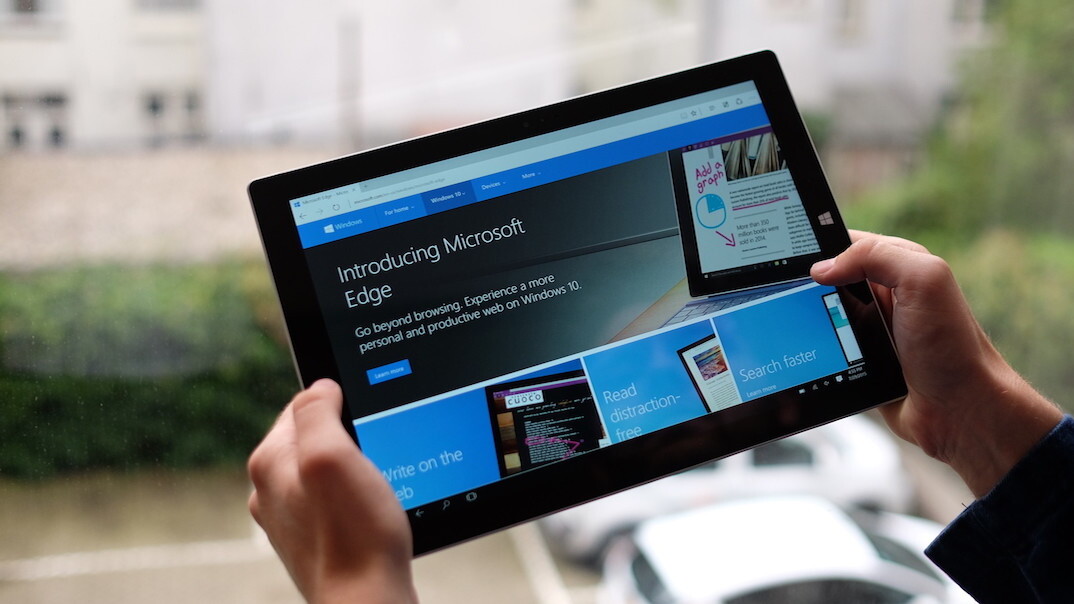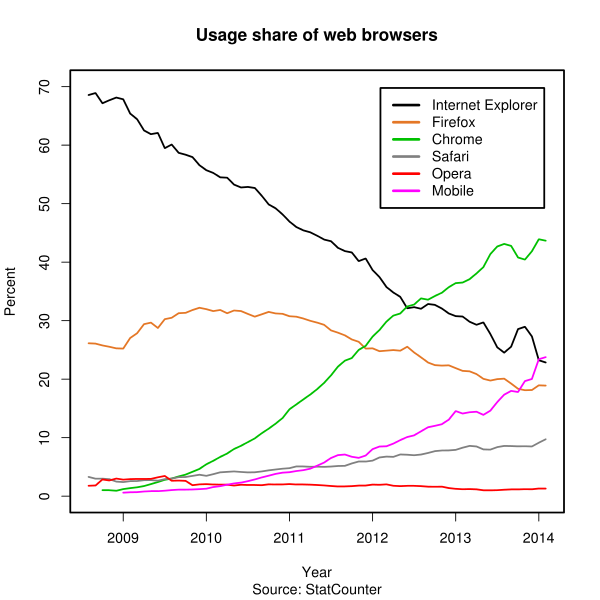
Microsoft’s new browser that comes with Windows 10 is great on the surface. It’s fast, stable and has a slick new look.
Web developers, however, don’t care about that. They care if Microsoft’s new browser will break their websites or not with its new rendering engine.
Over the last ten years the Web has been utterly transformed. Internet Explorer, once dominant, has been decimated by Google’s faster and more reliable Chrome browser.

With Edge, Microsoft wants to win developers back and has pulled out the stops to do it.
To start from a fresh slate, Microsoft created a fork of its old Trident rendering engine and worked tirelessly to balance backwards compatibility and modern Web interoperability.
Over the years, developers have implemented various hacks, workarounds and oddities to get their code functioning fully in Internet Explorer. Microsoft wants that to stop.
One of the biggest changes to fight that behavior in Edge means that the browser will now identify itself a “WebKit” or “Chrome” based browser. It also won’t respond to IsIE() requests often used to detect the older browser.
A post published in June by the Edge team said that developers should not “limit [their] site to working only on a small set of current known browsers” as it will “almost certainly break in the future.”
Edge processes specific WebKit CSS vendor prefixes to ensure code specifically written for Safari and Chrome doesn’t break. It ships with support for the largest change to HTTP in the last 16 years, responsive images, the media capture API and more.
There are some oddities missing — WebRTC is conspicuously not supported — but Microsoft has even suggested its own new features, like Pointer Events for recognizing touch interactions.
Microsoft has also made available for the first time a public roadmap showing what Web platform support it’s building into Edge and when, along with new features it’s considering for the future.
It’s even changed its ways and now gives back to the community by contributing to Javascript libraries and frameworks used to build the Web.

Edge scores 402 out of 555 points on the HTML5 test, a huge leap forward from the support in Internet Explorer. It’s still behind both Firefox and Chrome by a decent amount on account of missing support for things like WebM and WebRTC, but Microsoft is moving in the right direction.
On the Acid3 test, Edge scores a perfect 100/100 and renders smoothly, a feat which bought Internet Explorer 11 to its knees.

The browser also holds the highest score of any currently available browser on the ES6 compatibility test, with support for 68% of features.
All in all, Microsoft wants you to know that building for its browser doesn’t suck anymore and it’s backing up those claims.
In the meantime, Microsoft needs to win over developers — a huge feat, after years of pain — to convince them to stop writing code that targets its browser specifically, and instead encourage them to write for Web standards.
As a Web developer myself, I’m a little skeptical it can keep up the momentum because I’ve been burned by IE in the past, but I’m excited that it actively participating might also reinvigorate the competition to move faster.
Microsoft is back in the browser game, finally.
Read Next: Windows 10 reimagines the OS with flexible and functional design
Get the TNW newsletter
Get the most important tech news in your inbox each week.